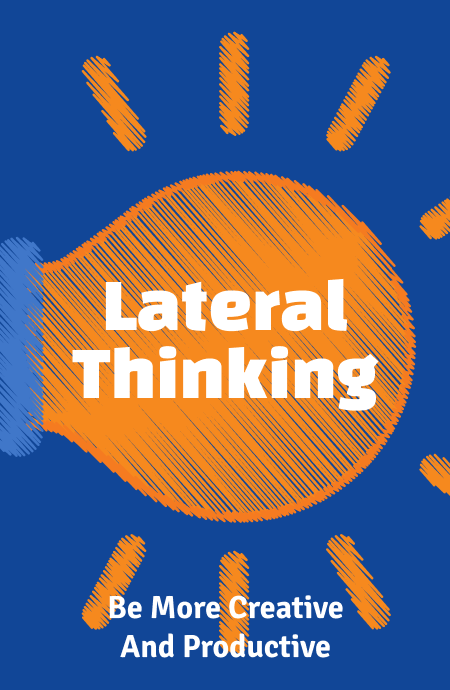Lesson 1-
The purpose of any form of thinking is to collect information and to make the best possible use of it. The mind works to create the best use of new information; however, doing so requires some means for restructuring the old patterns and updating them to suit the needs of current times. The traditional methods of thinking teach us how to refine such patterns and establish their validity. The best use of available information is not possible unless we create new patterns of thinking and abandon outdated modes of thought.
The mind functions to create patterns out of its surroundings. Once the patterns are formed it becomes possible to recognize them, to react to them, to use them. As the patterns are used they become ever more firmly established. These established patterns form a sort of code. This code system simply relates information to the code patterns instead of having to collect all the information.
Lateral thinking is a more deliberate process and is a way of using the mind similar to logical thinking. Lateral thinking involves insight. Insight provides an effective way of changing ideas in a situation where information cannot be evaluated objectively. Even when information can be evaluated objectively, as, in science, an insight rearrangement of information leads to huge leaps forward. Lateral thinking involves creativity as it is concerned with the generation of new ideas. Creativity is often associated with aesthetics, emotions and expression which are not considered rational. However, to use creativity, it is necessary to view it as a way of using the mind and a way of handling information. Lateral thinking is also concerned with liberation from old ideas and the stimulation of new ones.
The traditional type of thinking is called vertical thinking. In vertical thinking, one advances through progressive stages, each of which must be justified. It is quite different from lateral thinking. In lateral thinking one may have to be wrong at some stage to achieve a correct solution; in vertical thinking, like logic or mathematics, such would be impossible. Moreover, in vertical thinking, one only selects the relevant information in contrast to lateral thinking, where some irrelevant information may be sought out as well.
It must be noted that lateral thinking is not a substitute for vertical thinking. Skills in both are necessary and are complementary to each other. While vertical thinking is selective, lateral thinking is generative. Lateral thinking enhances the effectiveness of vertical thinking.
Before delving deeper into lateral thinking, we must first look into the mechanics of the brain.
Lesson 2
Before
Unlock Knowledge with Wizdom App
Explore a world of insights and wisdom at your fingertips with the Wizdom app.
 1 Million+ App Download
1 Million+ App Download  4.9App Store Rating
4.9App Store Rating 5000+Summaries & Podcasts
5000+Summaries & Podcasts









